BIGNÈ DI SAN GIUSEPPE (BEIGNETS)
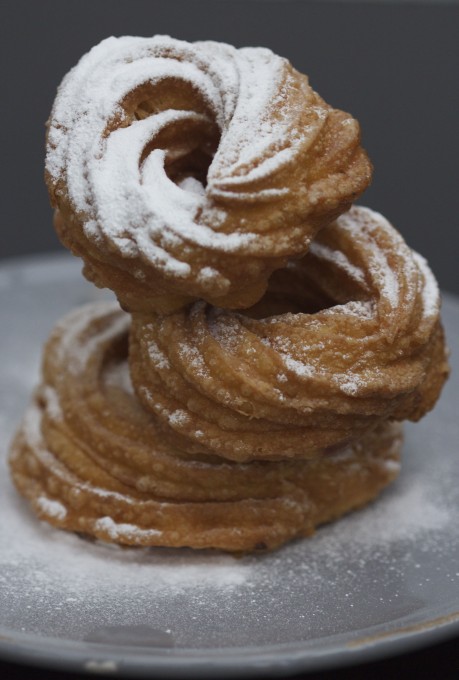
Prep time
Cook time
Total time
The 19th of March is the Festa di San Giuseppe in Italy in honour of Joseph, Jesus Christ’s step-father. It is celebrated as Father’s Day and a type of doughnut, Bignè di San Giuseppe is served.
Bignè di San Giuseppe take on different names depending on where they are made- zeppole or sfinci in Sicilia, tortelli in Milano, zippulas sarde in Sardegna and bignè and confetti elsewhere. They were traditionally made with flour and water, shaped like wreaths, deep-fried and sprinkled with icing sugar, sugar and cinnamon or brushed with honey. Today, particularly in Naples, they add eggs and make a type of Choux pastry. In Sicilia they can be filled with a sweet ricotta cream flavoured with chocolate and candied citrus peel. In other places they are filled or topped with pastry cream and topped with amarena cherries. Some are flavoured with lemon or orange zest, liqueur or rice (Umbria, Firenze and eastern Sicilia). In some places the dough can be yeasted (Lazio and Campania) or include potatoes.
Bignè di San Giuseppe take on different names depending on where they are made- zeppole or sfinci in Sicilia, tortelli in Milano, zippulas sarde in Sardegna and bignè and confetti elsewhere. They were traditionally made with flour and water, shaped like wreaths, deep-fried and sprinkled with icing sugar, sugar and cinnamon or brushed with honey. Today, particularly in Naples, they add eggs and make a type of Choux pastry. In Sicilia they can be filled with a sweet ricotta cream flavoured with chocolate and candied citrus peel. In other places they are filled or topped with pastry cream and topped with amarena cherries. Some are flavoured with lemon or orange zest, liqueur or rice (Umbria, Firenze and eastern Sicilia). In some places the dough can be yeasted (Lazio and Campania) or include potatoes.
Author: Woo Wei-Duan
Recipe type: Dessert (Dolci)
Cuisine: Campania
Serves: 12
Ingredients
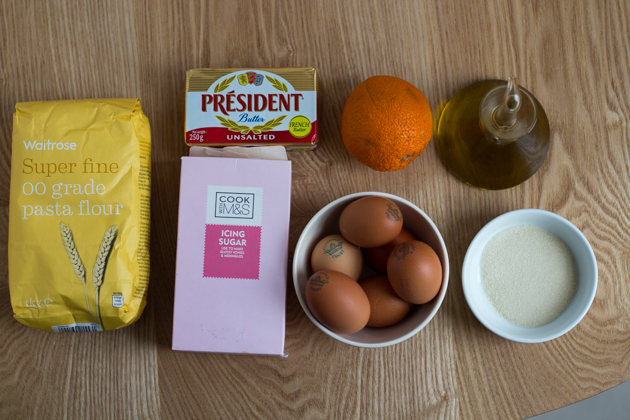
- 100 grams butter
- 250 grams water
- 30 grams caster sugar
- 200 grams flour
- 375 grams (6 eggs)
- 1 lemon or orange zested
- icing sugar, cinnamon sugar or pastry cream
- olive oil
Instructions
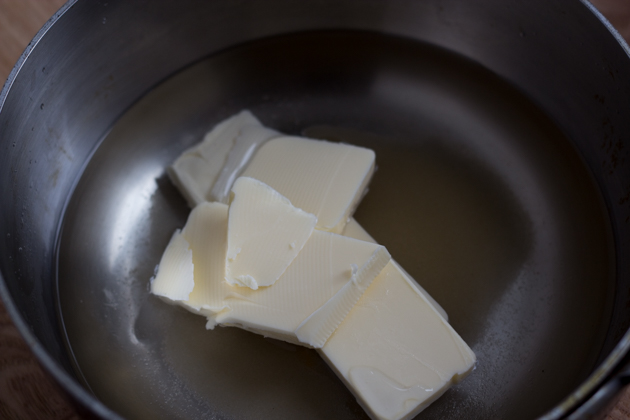
- Heat the butter, sugar and water together.
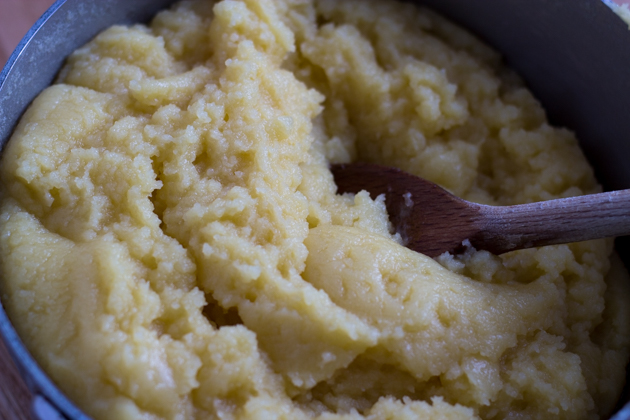
- Remove the pot from the heat and add the flour to the mixture all at once and stir with a wooden spoon until thick (about 5 minutes). The dough should not be sticky.
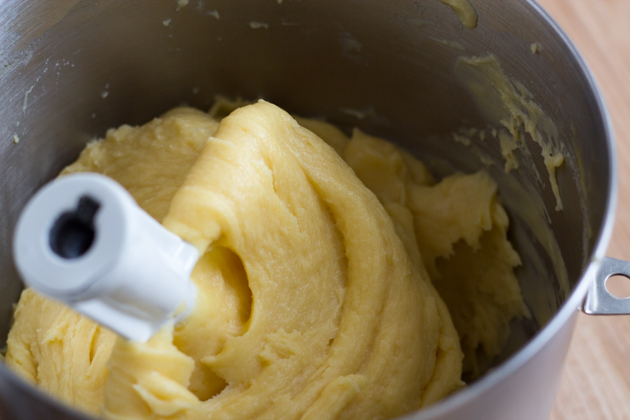
- Place the mixture into a standing mixer and mix on medium low using the paddle attachment until it has cooled to a barely warm temperature. Add the eggs one at a time, making sure that the egg is completely incorporated (1-2 minutes) before adding the next one otherwise the dough will break. The key here is to make sure that each egg is evenly incorporated before adding the next one while trying to add them as quickly as possible. When half the eggs have been added there is less risk of the dough breaking so being patient in the beginning pays off later. Before adding the last ¼ of the eggs, stop the machine and scrape down the sides. Since the precise number of eggs to be added varies with the humidity and how dry the dough was when it was removed from the pot, the dough needs to be tested to ascertain it is the correct consistency.
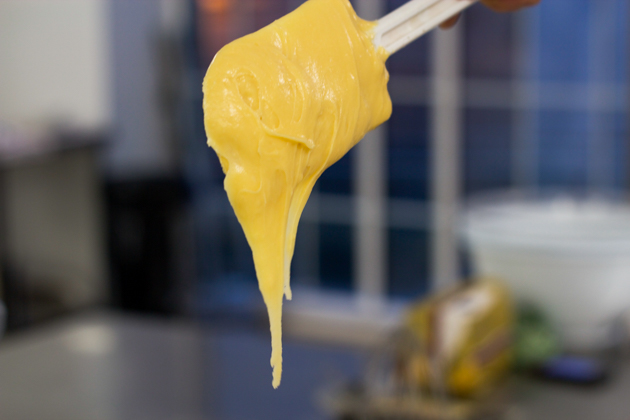
- Put in a rubber spatula and lift it out with the rubber tip angled down. It should form a triangle slowly running off the spatula. The dough should be smooth, supple and homogenous. If it is too liquid the pastry will be flat and if it doesn’t move at all it will be too dense. If it is too thick then add another egg and do the test again until the dough is the desired consistency. Add the lemon or orange zest and mix to combine.
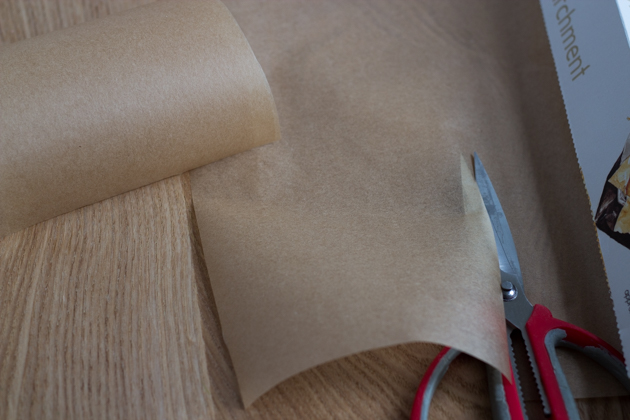
- Cut parchment paper into 12 cm squares.
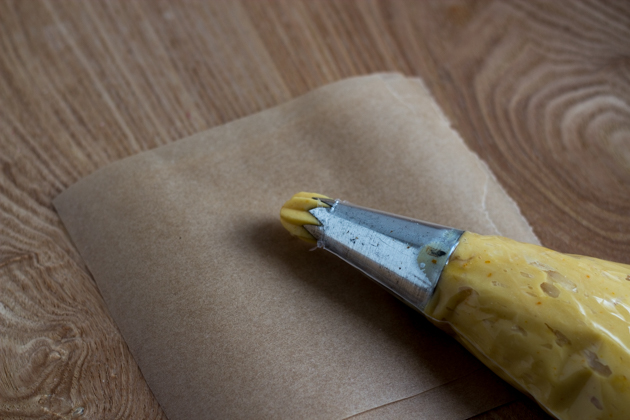
- Take one piece of the parchment paper to place the dough on. Place the dough into a pastry bag fitted with a star tipped nozzle about 1 cm wide. Roll the end closed and, if you are right-handed, hold the end with your left hand and grip the bag about 6 cms above the top of the pastry tip with your right using this hand to squeeze the bag in order to pipe out the dough.
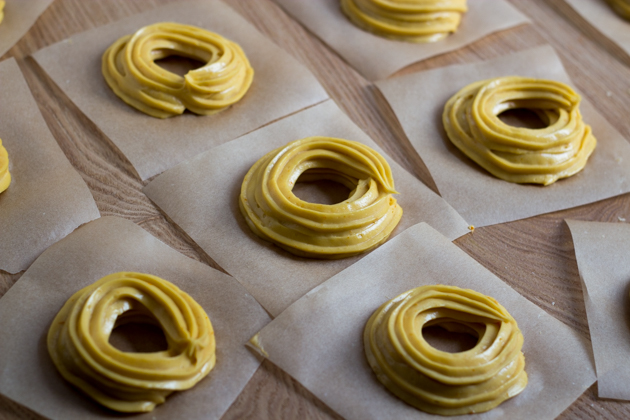
- The side of the pastry tip should be touching the sheet pan forming a 45° angle to the pan and squeeze the bag with the right hand to form a 10 cm diameter wreath, curling the dough on top of the first layer to form two layers. Repeat using all up all the dough.
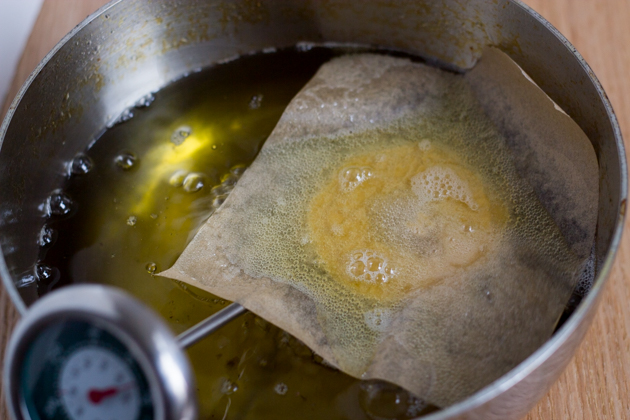
- Place a wire rack over a sheet pan. Pour the oil into a wide saucepan 6-8 cm deep and heat to 180C. Add 1 or 2 of the parchment paper with the dough on it.
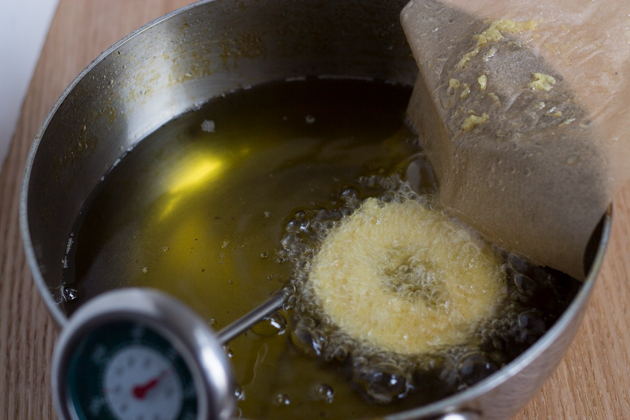
- When the paper detaches, remove it and discard. When the doughnuts are lightly golden in colour turn up the heat. Try to keep the temperature constant.
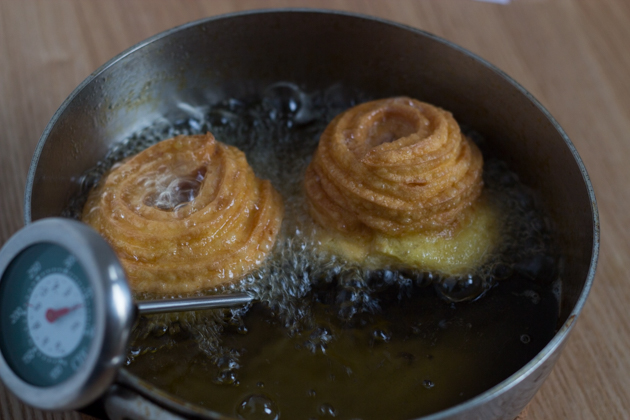
- Fry until golden and then turn over and fry the other side until puffed and golden, about 3 minutes per side.
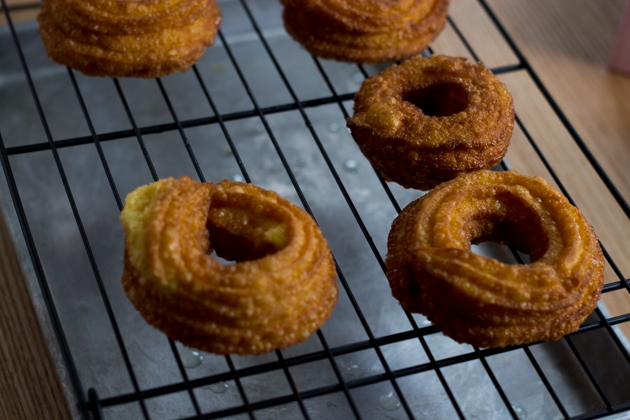
- Remove with a slotted spoon to the wire rack to drain. Return the oil temperature to 185C in between batches.
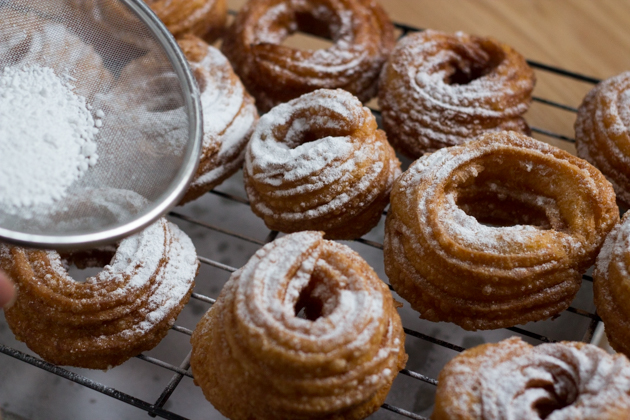
- When drained, remove the doughnut to a plate and sprinkle with icing sugar. These can also be topped or filled with pastry cream and topped with amarena cherries. They can also be topped with cinnamon sugar.
Recipe by Living a Life in Colour at https://www.livingalifeincolour.com/recipes/bigne-di-san-giuseppe-beignets-campania/